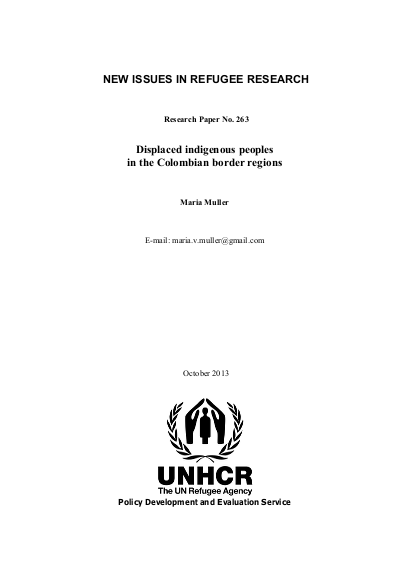
The international community widely acknowledges that ‘indigenous peoples have suffered from historic injustices’ and recognizes ‘the urgent need to respect and promote the inherent rights of indigenous peoples which derive from their political, economic and social structures’ (United Nations General Assembly 2007). Moreover, the vulnerability of indigenous populations are exacerbated in Colombia due to decades of armed conflict, social marginalization, massacres and environmental degradation that have prompted both the displacement and confinement of many of these communities. It is estimated that between 1997 and 2011, a total of 106,562 members of indigenous communities were displaced in Colombia (UNHCR 2012). Alarmingly, according to the National Indigenous Organization of Colombia (Organización Nacional Indígena de Colombia, ONIC), there are 102 indigenous communities at risk of extinction (UNHCR 2012). Indigenous peoples have a widespread presence in the border regions between Colombia and Venezuela, and between Colombia and Ecuador, though their populations are under-registered in the asylum process, according to UNHCR statistics; this has often tented to mask the protection challenges these communities faced upon arrival to Venezuela and Ecuador. Thus, greater explicit focus must be centred on the particular vulnerabilities and issues of indigenous Colombian refugees and internally displaced persons (IDP).
